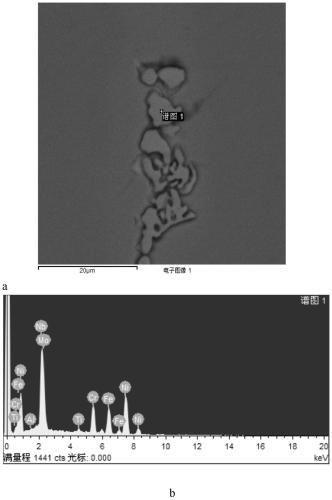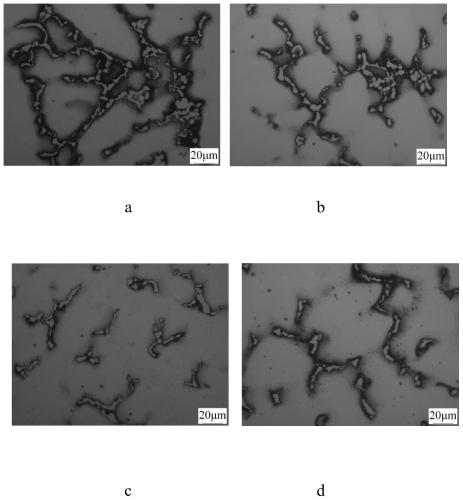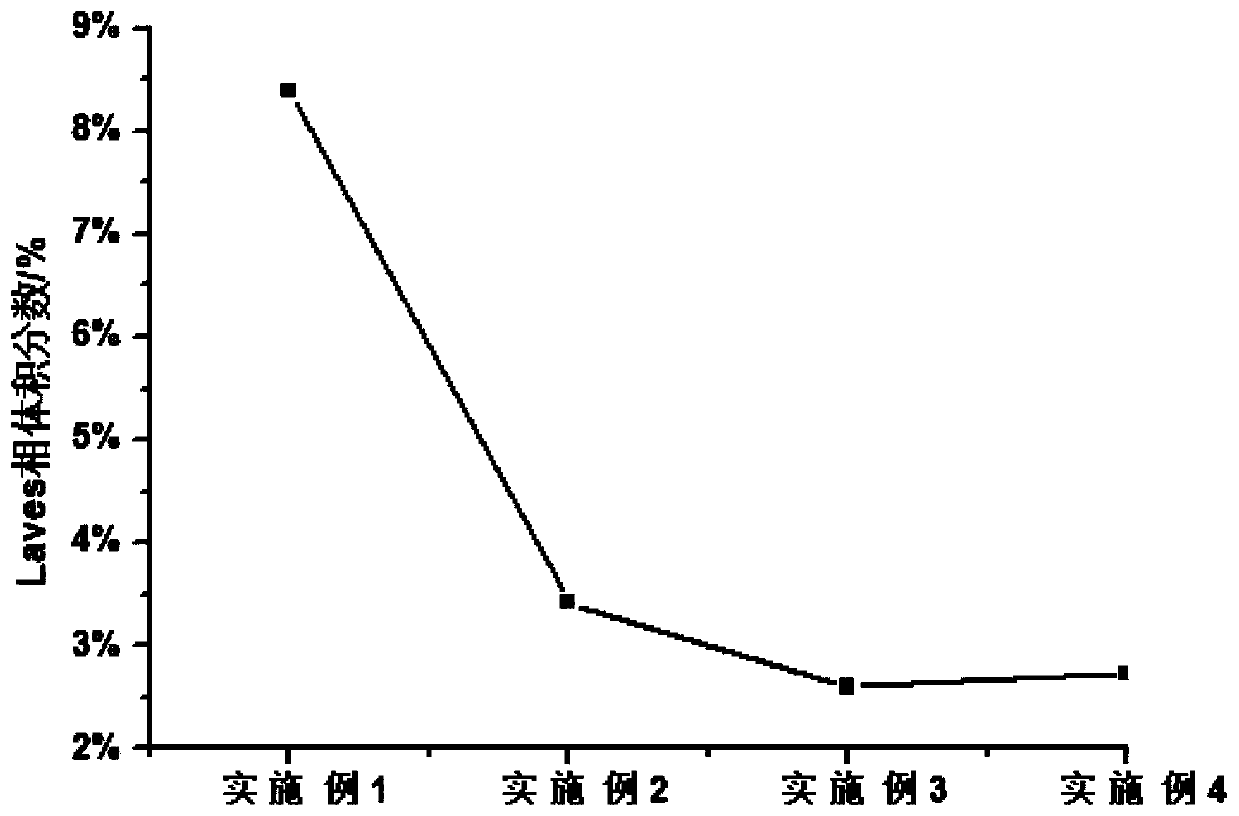A method for reducing the laves phase in nickel-based superalloy steel ingots
A nickel-based high-temperature alloy and high-temperature alloy steel technology, applied in the field of metallurgical technology, can solve the problems of low diffusion rate, high temperature, and difficult homogenization treatment
- Summary
- Abstract
- Description
- Claims
- Application Information
AI Technical Summary
Problems solved by technology
Method used
Image
Examples
Embodiment 1
[0028] Take 50Kg of master alloy, carry out vacuum induction melting, and cast to obtain a steel ingot. Take metallographic samples for microstructure observation and analysis, and then the master alloy is electroslag smelted, using a mass percentage of about 5-7kg CaF 2 : CaO: Al 2 O 3 : MgO=60:15:20:5 electroslag slag, the crystallizer diameter is Melting current 3±1kA, voltage 45±5V, feeding current 1-2kA / s. Then, 1140℃×24h homogenization annealing was carried out; finally, the ingot was kept at 1080±15℃ for 120min before forging, the forging temperature was ≥1080℃, the final forging temperature was ≥980℃, and the total forging ratio was ≥4, and its mechanical properties were measured.
[0029] see figure 1 , figure 1 (a) and (b) respectively represent the scanning electron microscope picture of the Laves phase in the ingot structure of Example 1 and the element composition of the Laves phase. It can be seen that a large amount of Nb and Mo elements are enriched in t...
Embodiment 2
[0031] Get 50Kg of master alloy, add ferrovanadium master alloy, make vanadium element weight percentage content be 0.2% of the master alloy weight, carry out vacuum induction melting, cast, take metallographic sample to carry out microstructure observation and analysis, the remaining steps are the same as the embodiment 1. Determine its mechanical properties.
Embodiment 3
[0033] Get 50Kg of master alloy, add ferrovanadium master alloy, make the weight percentage of vanadium element be 0.5% of the master alloy weight, carry out vacuum induction melting, cast, take metallographic sample and carry out microstructure observation and analysis, the remaining steps are the same as the embodiment 1. Determine its mechanical properties.
PUM
 Login to View More
Login to View More Abstract
Description
Claims
Application Information
 Login to View More
Login to View More - R&D
- Intellectual Property
- Life Sciences
- Materials
- Tech Scout
- Unparalleled Data Quality
- Higher Quality Content
- 60% Fewer Hallucinations
Browse by: Latest US Patents, China's latest patents, Technical Efficacy Thesaurus, Application Domain, Technology Topic, Popular Technical Reports.
© 2025 PatSnap. All rights reserved.Legal|Privacy policy|Modern Slavery Act Transparency Statement|Sitemap|About US| Contact US: help@patsnap.com



